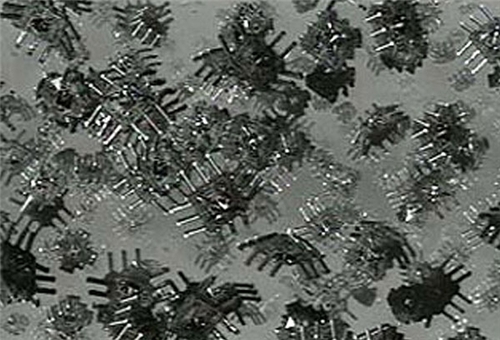Newly-Produced Nanocarriers Able to Carry Multiple Drugs Concurrently

TEHRAN (FNA)- Iranian researchers from Tabriz University of Medical Sciences and Treatment Services produced a new type of nanocarriers that are able to deliver two anticancer drugs to cancer cells simultaneously.
The nanocarriers have been designed in a way that they release the drug only at controlled pH value and temperature. The research was conducted in a bid to achieve nanostructured intelligent drug delivery systems.
According to Dr. Roya Salehi Qrehvarn, one of the researchers, contrary to the present studies on the delivery of only one anticancer drug at one time, the new nanocarrier carries and releases two anticancer drugs with less amount of drug but more effectiveness. This characteristic reduces the toxicity caused due to the consumption of anticancer drugs, which many of patients have to deal with. In addition, cancer cells do not become resistant to the drugs when the new mechanism is used.
In the production process of the nanocarrier, a new cationic ionic liquid that responds to a few triggers was produced through polymerization method firstly, and then it was attached to silicon nanoparticles and it was modified. Next, the nanoparticles were simultaneously attached to two anticancer drugs of doxorubicin (DOX) and methotrexate (MTX) through electrostatic interactions. HPLC-UV test was used to study the simultaneous release of the drugs.
The nanocarrier did not show any sign of toxicity on cell lines even after 72 hours. However, the fatal effect of nanocarrier containing two anticancer drugs against the medical formulation of lung and breast cancer cells is very noticeable. The nanostructured drug delivery system has been tested in the treatment of rats that suffered from cancer. Results showed the gradual treatment of the rats in a desirable manner.
Results of the research have been published in Journal of Drug Targeting, vol. 22, issue 4, January 2014, pp. 327-342.
